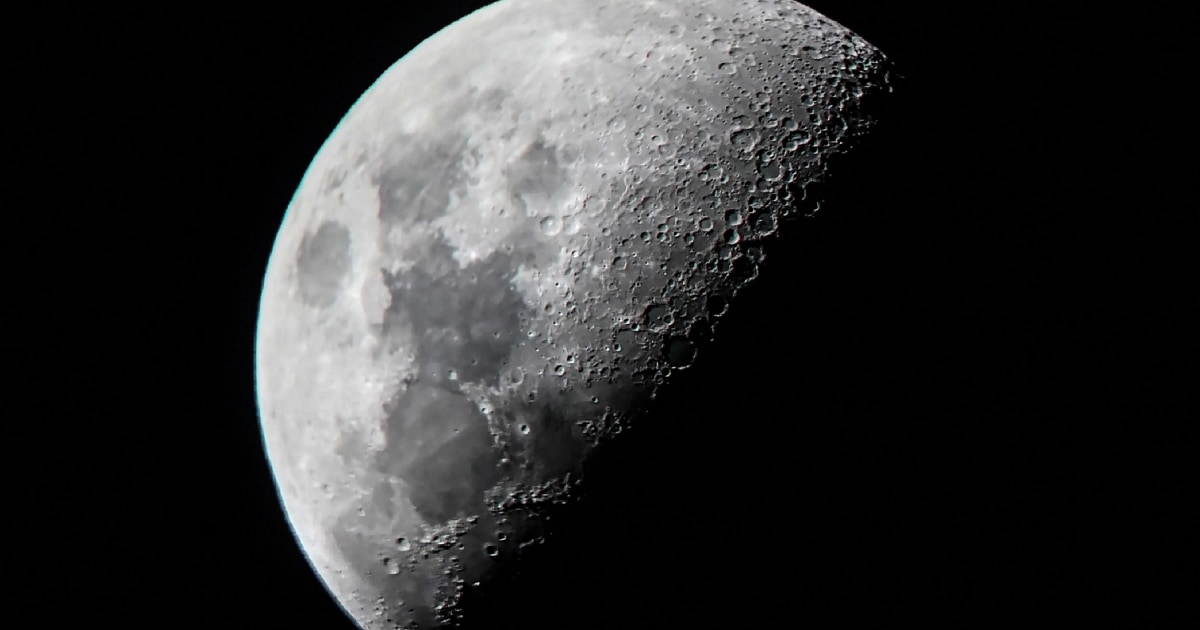MOSCOW – Russia and China have agreed to build a base on or around the moon, the latest signal of geopolitical maneuvering in space and an apparent rebuke from the United States.
Roscosmos, the Russian space agency, this week signed an agreement with the Chinese National Space Administration on the joint creation of what they call the International Scientific Lunar Station.
The memorandum of understanding between the two governments is the latest sign that Russia sees its future in space primarily as a partnership with the Chinese space program rather than NASA, its main partner for the past 25 years.
NASA had invited Russia to participate in a US-led lunar project known as Artemis.
The project with China will be “guided by the principles of equal sharing of rights and responsibilities” and will “promote cooperation … with open access to all interested countries and international partners,” the Russian space agency said in a statement published after the memorandum was released. signed on Tuesday.
Download the NBC News app for breaking news and politics
Roscosmos’s statement said that the purpose of the lunar station with China will be to strengthen scientific cooperation and promote “the exploration and use of space for peaceful purposes in the interest of all mankind.”
This wording echoes Russia’s criticism of the NASA-led Artemis project, which also proposes the construction of a space station orbiting the moon as the basis of a wider international effort to explore the lunar surface.
Last year, Roscosmos chief Dmitry Rogozin dismissed NASA’s efforts as some sort of NATO-in-space political project.
“With the moon project,” Rogozin told Russian tabloid Komsomolskaya Pravda in July, “we see our American partners depart from the principles of cooperation and mutual support developed during the collaboration on the ISS. international., but comparable to NATO, “he added.” We are not interested in participating in such a project. “
NASA and Roscosmos were the two main partners responsible for the construction and operation of the International Space Station, or ISS, a project launched 20 years ago that has served as the ultimate expression of the post-Cold War reconciliation between Russia and the United States.
But that relationship seems to be slowly deteriorating as broader US-Russia relations deteriorate.
The Soviet Union launched the first man into space, Yuri Gagarin, nearly 60 years ago, sparking an intense race with the United States. The US placed astronauts on the moon eight years later.
Moscow has never landed cosmonauts on the moon, and in recent years the space program has failed and suffers from corruption and quality control issues, while the US commercial space industry and China’s space program have advanced, threatening to surpass the once legendary Moscow. program.
In China, the Global Times newspaper published a front-page article celebrating the agreement with Russia and explaining to its readers that Washington was trying to position itself to set the conditions for future international activities on the Moon and beyond, in deep space. dictate.
“To participate in shaping the direction of space exploration and have a say in the making of the rules, China and Russia must be at the forefront of space exploration and promote balance and fairness with strength and real actions, ”he said.
Memorandums of understanding represent little more than the first steps towards a project, but they are symbolic and indicative of the political tides that continue all space programs – be it Russia, China or the United States.
In the short term, Russia and China say they will coordinate several robotic missions to explore the moon.
NASA has been excluded by the US government from cooperating with the Chinese space agency. Relatively isolated, China’s space program has made great strides over the past decade. Beijing was unable to join the International Space Station and is focusing on creating its own national space stations.
Details of what the proposed lunar station with Russia will look like are unclear for now.
Roscosmos’s statement said it will be “a complex of experimental research facilities created on the surface and / or in orbit around the moon” to enable a wide variety of research and exploration efforts, both with and without crew. .
In other words, the International Moon Station sounds a lot like a Russian-Chinese answer to the NASA-led Artemis project.
However, projects like these take years to get off the ground, and the Russia-China Memorandum is the first of a long list of required steps. And while Russia hasn’t officially accepted NASA’s invitation to join the Artemis project, it hasn’t officially turned it down either.
“I think this is some kind of diplomatic bargaining game,” Pavel Luzin, an independent analyst for Russian space policy, told NBC News. “Russia has nothing to offer China in a China-led Moon program, and Russia should certainly continue cooperation in space with the United States and Europe (as well as Japan and Canada) after the closure of the ISS program.”
Luzin says it remains unclear whether Rogozin’s harsh rhetoric about the Artemis project represents official Russian policy.
“Rogozin has said that we will not join Artemis, but it seems that this is most likely only his personal opinion and not Russia’s official and final decision,” said Luzin.

